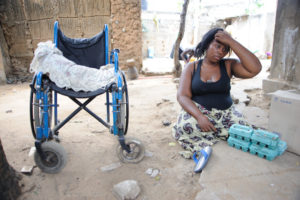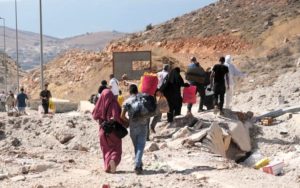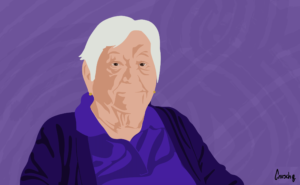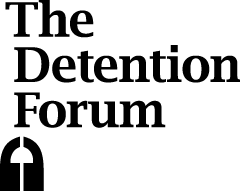As Winston Churchill noted in 1953: “Meeting jaw to jaw is better than war.” Given that Afghanistan is now in its fifth decade of conflict, this approach might ultimately prove the most effective. As the Taliban increasingly move in on more Afghan cities, there is no end in sight to the cycles of armed strife, foreign occupation, civil strife, war crimes, crimes against humanity, civilian casualties, forced displacement and devastation. For Antonio Donini and Norah Niland, both highly experienced humanitarian and human rights experts, this is leading to a desperate mood of anxiety amongst Afghanistan’s war-exhausted civilian population. A new peace approach is urgently needed. Antonio and Norah are founding, and active members of United Against Inhumanity. They originally wrote this blog for Global Geneva.

Failing to learn from history. Assistant Surgeon William Brydon, one of the few survivors from Britain’s 1842 Afghanistan disaster, when its expeditionary force of nearly 20,000 soldiers and camp followers was annihilated by Afghan tribesmen.
A moment of truth is in the offing for Afghanistan’s estimated 35 million people, plus the 5-6 million in the diaspora including refugees. The choice now is between continuing war or some kind of peace agreement between the belligerent parties leading to an end to the fighting. Only in this manner can Afghans start navigating their differences which led to – and have continued to sustain – the current fighting.
Most Afghans want the war to end. They seem to agree on one thing: there is no military solution. Most Afghan watchers also probably agree that the current peace process is based on wishful thinking: the stalled Doha talks are the result of a bilateral deal between an insurgency that is getting stronger by the day and a superpower – the United States – desperate to cut and run. The nominally legitimate Afghan government was presented with a fait accompli and a recipe for disaster.
Afghans, and the many external actors that have prioritized their own agendas – whatever the human toll – must accept that ending the fighting is the only way to give peace a chance. Since the outbreak of warfare in 1979, experience shows that military options and defeat-the-enemy strategies are not the answer. Ending hostilities and achieving a sustainable peace through a political settlement must be the strategic objective.
This will entail painful compromises, yet all other options are worse. According to most evidence, the bulk of Afghans favour a political deal leading to an end to the fighting. One does not make peace with one’s friends but with one’s enemies. While numerous Afghans and others have valid concerns about the resurgence of the Taliban, the routine demonization of this group has inhibited the possibility of peace talks for years.
During the Cold War, there was a widespread view amongst pacifists and some realists in the West that it would be “better to be red than dead”. If the alternative is between nuclear annihilation and communist rule, surely the latter should be the preferred option. In Afghanistan today a similar calculus of suffering arises: if the only option to endless cycles of war and civilian suffering is some sort of power-sharing deal with the Taliban, then so be it.
 The bulk of ordinary Afghans want an end to the war, now dragging into its fifth decade. (Photo: UNAMA)
The bulk of ordinary Afghans want an end to the war, now dragging into its fifth decade. (Photo: UNAMA)
Afghanistan: the only solution is home-grown with possible neutral outside mediation
Of course, ground realities in Afghanistan are always complicated. Are we in a TINA (there is no alternative) situation? The US military is not coming back and a UN peace enforcement mission is off the cards. Regional actors? Russia: a scalded cat fears cold water. China, not a chance. Pakistan, India, Iran and Central Asian neighbours will have few cards to play if Afghan belligerents pause and allow the majority of their fellow citizens that favour peace to have their say.
The only viable solution is one that is home grown – perhaps with some able, and disinterested, external mediation.
Like it or not, the Taliban are deeply rooted in Afghan society. They represent a version of values and mores that are widespread especially in rural Pashtun society. Unlike the US and NATO, they are here to stay. One can discuss endlessly the extent to which they have “changed” or remained the same since they ruled in Kabul (1996-2001). It is unclear whether they are open to compromise on women and girls’ rights, elections, sharia law and the like.

The West, including NATO forces, have failed in Afghanistan. To date, the Kabul government has only survived because of massive outside investment and military support. (Photo: NATO)
But the facts on the ground speak for themselves: they are sweeping towards their goal much faster than anyone anticipated. Of course, they are supported by interested stakeholders from the other side of the Durand line, notably Pakistan, – regardless of the official rhetoric in Islamabad. But then the Kabul government commands little legitimacy and is only surviving because of the massive investment in blood and treasure by the US-led coalition.
This liberal peace behemoth has clearly failed in ALL the objectives it had set for itself in 2001 (peace, state-building, parliamentary democracy, rule of law, women’s rights, development…) including in the promotion of values and mores which are not necessarily more in tune with the bulk of Afghan society than those espoused by the Taliban. Moreover, it has imposed an unviable transnational government that survives only because of the largesse and attendant corruption of the West.
In fact, both sets of actors seem to suffer from the same disconnect between their military and political agendas and facts on the ground. As sociologist Peter Berger would put it, social processes, whether peace or development, can only be successful if they are “illuminated from within”. They must make sense to those concerned.
There is a case to be made that both the “Islamic Republic” and the “Emirate” perspectives of what peace might look like are equally disconnected from the actual lived reality of most Afghans. Some would argue that without a social contract that is broadly acceptable to the population “peace” is going to be of the negative variety – and temporary at best.
 Over 70 per cent of Afghans live and work in rural areas, many from subsistence farming. (Photo: UNAMA)
Over 70 per cent of Afghans live and work in rural areas, many from subsistence farming. (Photo: UNAMA)
Negotiating a peace deal may in fact be the easy part. For the vast majority of Afghans, the war has been a total social fact. It has profoundly transformed the lives, livelihoods, individual subjectivities, collective identities and everyday social relations.
The war and its corollaries have also been vectors of change. The Afghanistan of 2021 is very different from that of 2001, not to mention 1979. Displacement, the experience of refugee camps, the prolonged presence of a vast apparatus of humanitarian organizations, the percolation of ideas of human rights and gender equity, remittances, the exposure to new ideas through radio (and later social media), the experience of first Soviet and then US-led interventions and their cortege of (mostly inadequate) reconstruction policies, the investments in education, health and other key sectors, the direct experience and fear of violence… These have all had their separate and sometimes cumulative consequences for the lives of Afghan families.
However, few will dispute that the direct and indirect experience of armed conflict has been the defining factor that sits atop the pyramid of consequences.
More importantly perhaps, the “entanglements” of Afghan society with the wider world have grown immensely in the past 20 years. Returning refugees have brought new ideas and aspirations. Youth, at least in urban areas and those returning from Iran and Pakistan, are educated and globalized in their views as never before. They fear the Taliban but do not feel much more comfortable with the current Kabul regime. The media and civil society are vibrant. An estimated 63 per cent of the population is under 25 and – except maybe in the last few months – has no direct experience of life under Taliban rule. Should the Taliban succeed on the battlefield, they will find it difficult to put the genie of social transformation back into the bottle.
 Afghanistan is a far different place today when compared to 2001, when the Taliban were ousted by U.S.-led forces, and even 1979, when the Soviets first invaded. The Taliban may find it difficult to force themselves unto the cities, but this will only mean further conflict unless a peace solution is found. (Photo: UNAMA)
Afghanistan is a far different place today when compared to 2001, when the Taliban were ousted by U.S.-led forces, and even 1979, when the Soviets first invaded. The Taliban may find it difficult to force themselves unto the cities, but this will only mean further conflict unless a peace solution is found. (Photo: UNAMA)
The other half of the sky
This also applies to the condition of women who, for all intents and purposes, have been left on the side-lines of the peace process. Peace cannot be viable if it is not in sync with the needs and aspirations of more than half of Afghan society. Afghan women are still widely viewed – if they feature at all in political analysis – as victims who endure structural and everyday discrimination.
However, the experience of war, being displaced and obliged to seek refuge, as well as the benefits of greater access than before to education, health care and roles in the public sphere as teachers, judges, police officers, parliamentarians and civil society activists has wrought profound change for many women and girls. Afghan families and society have also benefitted from the empowered presence of females in and outside the home. It is Afghan women themselves who have played a critical role in advancing gender equity. The rights of females cannot be seen as a bargaining chip in any negotiation process; this means that Afghan women must be at the centre of shaping the country’s future.
 Woman bowling in Kabul. The situation of women, particularly in urban areas, has changed over the past 20 years. (Photo: UNAMA)
Woman bowling in Kabul. The situation of women, particularly in urban areas, has changed over the past 20 years. (Photo: UNAMA)
The Doha talks have failed to recognize certain on-the-ground realities
The peace process, such as it is, has not touched these issues of adaptation and social transformation and the belligerents should recognize such changes in Afghan society. The lack of a social contract that links individuals and communities to the state is a critical factor in the disconnect between the Kabul political elite and the majority of citizens who live a hand-to-mouth existence.
Unless such factors are addressed peace will be nothing other than an ephemeral dream. It is important to recall the reasons why the 2001 Bonn agreement was doomed to fail. It was burdened by three original sins: a victor’s peace from which the Taliban were excluded; the return of the reviled warlords that the Taliban had neutralized; and the significance of the need for justice in Afghan society, notably the holding to account of those responsible war crimes and crimes against humanity. If peace negotiations are left to the belligerents, history will likely repeat itself.
So, what can be done? Can outsiders help?
The first priority is to stop the war, the slaughter of civilians, and the inhumanity that has pulverized the lives of so many Afghans. While peace talks in Doha go round in circles, civilian casualties keep mounting. Clearly, the peace process is not working.
Because the situation in Afghanistan stems largely from actions taken by four of the five permanent members of the Security Council, the United Nations is, effectively, out of the game; the US and NATO countries have lost all credibility as peace brokers or honest mediators. The parties to the conflict, apparently, have limited ability to map out or invest in a common vision for the future of the country.
Trust, too, is in very short supply. Honourable and neutral external mediation must be considered. Who could do this and have the necessary credentials vis-à-vis the different belligerents? Perhaps a double headed mediation team could do the job: two countries with no axe to grind and perceived as neutral. Why not Switzerland and Malaysia, or Ireland and Indonesia? Their immediate objective should be a ceasefire and monitoring mechanism. Then the quest for positive peace can start in earnest. It has to be inclusive and representative of all currents of Afghan society to have any chance of success.
Cover photo credit: Mustafa Olgun, taken in Mezar-i Sharif, January 2018
The views expressed in this opinion piece do not necessarily reflect those of United Against Inhumanity.











